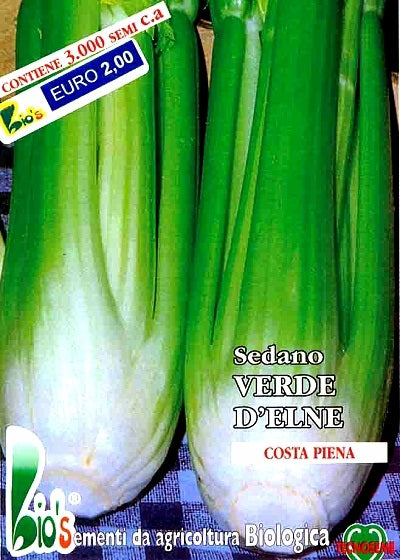Scientific name: Apium graveolans variety rapaceum
Family: Umbelliferae
Brief history and botanical notes on the plant
Celeriac, particularly cultivated and appreciated in the countries of central and northern Europe where there is a consolidated market for both fresh and processed products, is known and cultivated only in some areas of northern Italy. Considered a vegetable of secondary importance for the conventional market, its trade shows a certain interest in organic cultivation.
This vegetable has a two-year cycle, celeriac is a variety of celery and its peculiarity is represented by the enlargement of the root which forms a compact globe of approximately 15-20 cm in diameter. This portion of root is white and firm inside and is eaten raw or cooked.

Family and variety
Celeriac belongs to the umbelliferae family.
Variety: from Verona, with a rounded head, with very tender and tasty pulp; Prague giant, with an oblong and voluminous head and very tender pulp.
Pedoclimatic needs
Celeriac stops its growth at temperatures below 5-6 °C and dies at temperatures below 0 °C. The plants cannot tolerate heat above 30 °C. The ideal climate is temperate-humid.
Sowing and transplanting times
Sowing can be carried out in seedbeds from the end of February to April, while transplanting can be carried out between May and mid-June when the seedlings have reached a height of 12-15 cm (pruning leaves and roots), maintaining a distance of approximately 35 cm between rows and 20 cm on the row.
Fertilizations
Celeriac is a large consumer, very demanding in macroelements: N, P and K, it also requires a good supply of microelements. The ideal is a "rich" and fertile soil, good tillage and spreading of mature manure or compost will be necessary before transplanting.
Crop care and irrigation
It does not require particular cultivation care, it is important to irrigate according to the climatic trend both during the transplanting phase and throughout the entire cultivation period. The ideal is to maintain a certain constant humidity in the soil. Water imbalances (both excess and deficiency) cause severe stress to plants.
Adversity
Cercospora and septoria: fungal diseases caused by two different pathogens that manifest themselves in a very similar way: on the leaves we can witness the appearance of spots of variable size which lead to their drying out and in serious cases to the wilting of the plants.
It is necessary to work preventively by choosing resistant or tolerant varieties, replacing the soil in the seedlings, controlling the density of the seedlings and irrigation.
In the case of persistent rain, when the first stains appear we can intervene with cupric products.
Celeriac can also be subject to downy mildew, as well as attack by slugs and mole crickets.
Production and collection
The harvests begin from mid-August and continue until the first frosts, the yellowing of the leaves is an indication that the pulp is firm and crunchy (after approximately 110-150 days from transplanting). Conservation takes place in refrigerated cells, without undergoing any treatment, and lasts for a period of 4-5 months. From one hectare we can obtain approximately 30 quintals of product.
Nutritional values
Celeriac has a very low caloric value (23 kcal per 100 g). It is an integral source of minerals and in particular selenium, but also calcium, iron, phosphorus, iodine, magnesium, manganese, potassium, copper, sodium and contains fair quantities of vitamin A, B complex vitamins and vitamin C.
It therefore has remineralising, tonic, digestive, diuretic and purifying properties for the liver and kidneys, and has expectorant functions for mucus and phlegm.
Thanks to these actions it is particularly useful in cases of loss of appetite and digestive difficulties, in asthenic states and in convalescence, in uricemia, in bronchitis, in sinusitis and in small liver insufficiencies. Furthermore, it stimulates digestive function and bile secretion.
Recent studies recognize celery's ability to reduce blood pressure and cholesterol.
Biodynamics
We recommend rooting days for sowing, harvesting and processing. If you are transplanting, immerse the roots in water dynamited with 500 (horn manure) or spray 500 in the furrows, this will favor strong rooting stimulation. It goes well with any type of cabbage.
Being a heavy consumer, the ideal is to prepare the soil by spreading a mature biodynamic pile, while to avoid fungal diseases use horsetail macerate.



